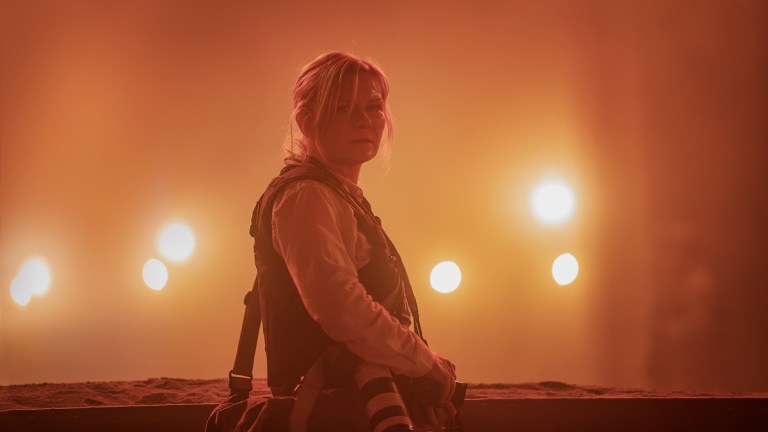One Watch Wonders: Civil War and Other Great Movies You Only Want to Watch Once
Seen it, can’t unsee it, not going to see it again.

Civil War is an extremely powerful, effective movie that thrusts you into the middle of an American civil war seen through the eyes of a war photographer. It’s brutal. It’s extraordinarily violent. The sound design is bordering on abusive. And if you watch it in IMAX you can reasonably expect to leave the theater with more than a little motion sickness. It is, however, excellent, with great performances from Kirsten Dunst as the older, jaded photographer and Cailee Spaeny as the reckless youngster new to the game. So see it. But we’d be very surprised if you decide to rush back for a second viewing.
Here’s our celebration of the wonderful, must-see movies where once is quite enough, thank you very much.
Hereditary
To no one’s surprise, Ari Aster’s harrowing debut immediately makes the top of this list. You might think the early, shocking beheading of young Charlie (Milly Shapiro) is the most upsetting the film is going to be. And you would be wrong. This is a grief-drenched stress-fest, following a family who are utterly doomed. A movie featuring Toni Collette screaming, crying and banging her head, proclaiming she wishes she were dead, where, as the film progresses you start to think “she actually had a point” is not a film many people wish to revisit. Like Civil War it’s a movie that leaves you feeling distinctly not okay at the end. – Rosie Fletcher
Irréversible
This Gaspar Noé movie is notorious for its prolonged rape scene which takes place in a French underpass, but it’s the way that the film plays out in reverse which delivers the double gut punch. Beginning (at the end) in a BDSM club called “Rectum” two men storm in, one almost gets raped, then the other beats a man to death with a fire extinguisher. But it’s not until the end (the beginning), that we understand why (the brutal rape of one of the men’s girlfriends, Alex – played by Monica Bellucci), and that they’ve killed the wrong man. Oh and Alex was pregnant. The experience is like watching unfolding horrors, discovering with every new scene it’s worse than you thought. Brilliant, of course, but fuckinell. – RF
Grave of the Fireflies
Aww, it’s a lovely Studio Ghibli animation! What’s it doing in this list? If that is your reaction, then my friend, you have not seen Grave of the Fireflies. Set at the very end of World War II, it follows two Japanese orphans trying to survive. It’s delicate and beautiful and widely recognized as an impressive and important animation but good grief, is it sad. Seita and his younger sister Setsuko struggle to live after the death of their mother, initially going to stay with a selfish aunt who takes their supplies. Starving, the children are forced to steal and attempt to create their own world. It doesn’t work out. And if we talk anymore about the ending then we’ll cry so let’s leave it there. – RF
Dancer in the Dark
Bjork is extraordinary in this musical from auteur director Lars von Trier. Given he’s the maker of deliberately uncomfortable movies including Antichrist and The Idiots, this arguably more conventional, mainstream film might sound like a funny one to pick. It was nominated for a whole range of awards, including an Oscar and several Golden Globes, winning armfuls of others including several for the music, which was composed as well as performed by Bjork. So all in all, it’s an excellent film. Unfortunately it’s really, really upsetting.
Bjork plays Selma, a young Czech immigrant who is losing her eyesight. She and her son live in poverty but she works at a local factory attempting to save up enough money to pay for an operation which will save her son’s vision (he has the same condition as her). But the system fails her, she is robbed, ends up accidentally killing a policeman, and things get worse from there. The music actually makes it more unbearably sad with her final song delivered without accompaniment and left unfinished. Devastating. – RF
Snowtown
Also known as The Snowtown Murders, this is the debut feature of Justin Kurzel who went on to make Macbeth, Nitram and 2016’s Assassin’s Creed. It’s about some murders, it’s based on a true story, but films of horrific true crime cases are ten a penny – you wouldn’t watch many of them twice, because what’s the point? This is not the case with Snowtown. Named after the place in Adelaide where the bodies were found, Kurzel cast local non-actors to play the boys at the center of this story of a family growing up in poverty who are charmed by the charismatic John Bunting (Daniel Henshall). Bunting takes Jamie (Lucas Pittaway) under his wing, initially appearing to be a mentor, but he gradually indoctrinates him into his violent homophobic ways, going on to involve him in murders which totted up 12 victims, one of whom was Jamie’s half brother.
This is a piece of social realism and it’s an endurance test. Jamie’s “initiation” scene is nigh-on unbearable (if you’ve seen it you’ll know), while the sound design is deliberately oppressive making you feel like the world is closing in on you. It was one hell of a calling card for a director bound for greatness but seriously, once is enough. – RF
The Nightingale
Jennifer Kent’s debut The Babadook rewards multiple viewings; her follow up The Nightingale does not. A furious historical tale of a young convict woman in Van Diemen’s Land in 1825, she embarks on a journey to get revenge on the colonialist soldiers who brutalized her and her family. The Nightingale pulls no punches in its depiction of the atrocities these men carried out. She’s led on her journey by a young Aboriginal man, who has his own scores to settle and it explores the extreme racism, sexism, and the unthinking entitlement and ruthlessness of the white British soldiers.
Aisling Franciosi as Clare is steely and rage-fueled, Baykali Ganambarr and guide Billy is heart wrenching, and Sam Claflin as soldier Hawkins is one of the most hateful characters committed to screen. Screenings (in the UK at least) were plastered with warnings for viewers about the extremity of the material—there are many rapes, children and babies are killed horribly, and the violence is unflinching and unending. It’s got a lot to say, and it doesn’t need to say it twice. – RF
Wake in Fright (1971)
‘A teacher in a remote outback town is waylaid trying to get home for the holidays’ sounds almost cute as a movie premise. Cult Australian picture Wake in Fright is not cute. It’s stifling and sickening and famously involves protracted scenes of actual animal abuse so hard to stomach that I’d have serious concerns about anybody who chose to go through them more than once. By Ted Kotcheff, the director of Rambo: First Blood (checks out) and… Weekend at Bernie’s (more of a curveball), and featuring a deeply unsettling performance from Donald Pleasance, it’s a brilliantly claustrophobic film that I’ll never forget. A rewatch, though? Jog on. – Louisa Mellor
White God (2014)
Twice? I can’t honestly say I’ve seen this film once. I was in a movie theater where Kornél Mundruczó’s White God played, but found it so upsetting that I watched the carpet more than the screen. As the English subtitles weren’t on the carpet and I don’t speak Hungarian, the whole experience was more like an art installation from hell. Two words: dog fights. Yes, its story of an abandoned mixed-breed leading a dog army to wreak revenge on their oppressors is a powerful class and race metaphor, but come on, man, dogs getting hurt? You couldn’t pay me to watch it a second time – or for that matter, a first. – LM
The Elephant Man
The Elephant Man may be one of director David Lynch’s most widely celebrated films, but it lacks none of the potency that burns most Lynch films into your mind. In Lynch’s hands, the story of Joseph Merrick is sometimes visually presented as a work of straight horror. Yet, it is told with overwhelming empathy for its subject and his often unbearable hardships.
Strangely enough, it’s the unfiltered humanity of this movie that makes it so hard for me to revisit it. Before watching The Elephant Man, you have to ask yourself, “Am I in the mood to watch the soul of a person struggle to support the weight of existence before I settle in for a massive cry?” More often than not, I find that the answer is a resounding “no.” Even still, one watch is more than enough for this film to leave its eternal mark. – Matthew Byrd
